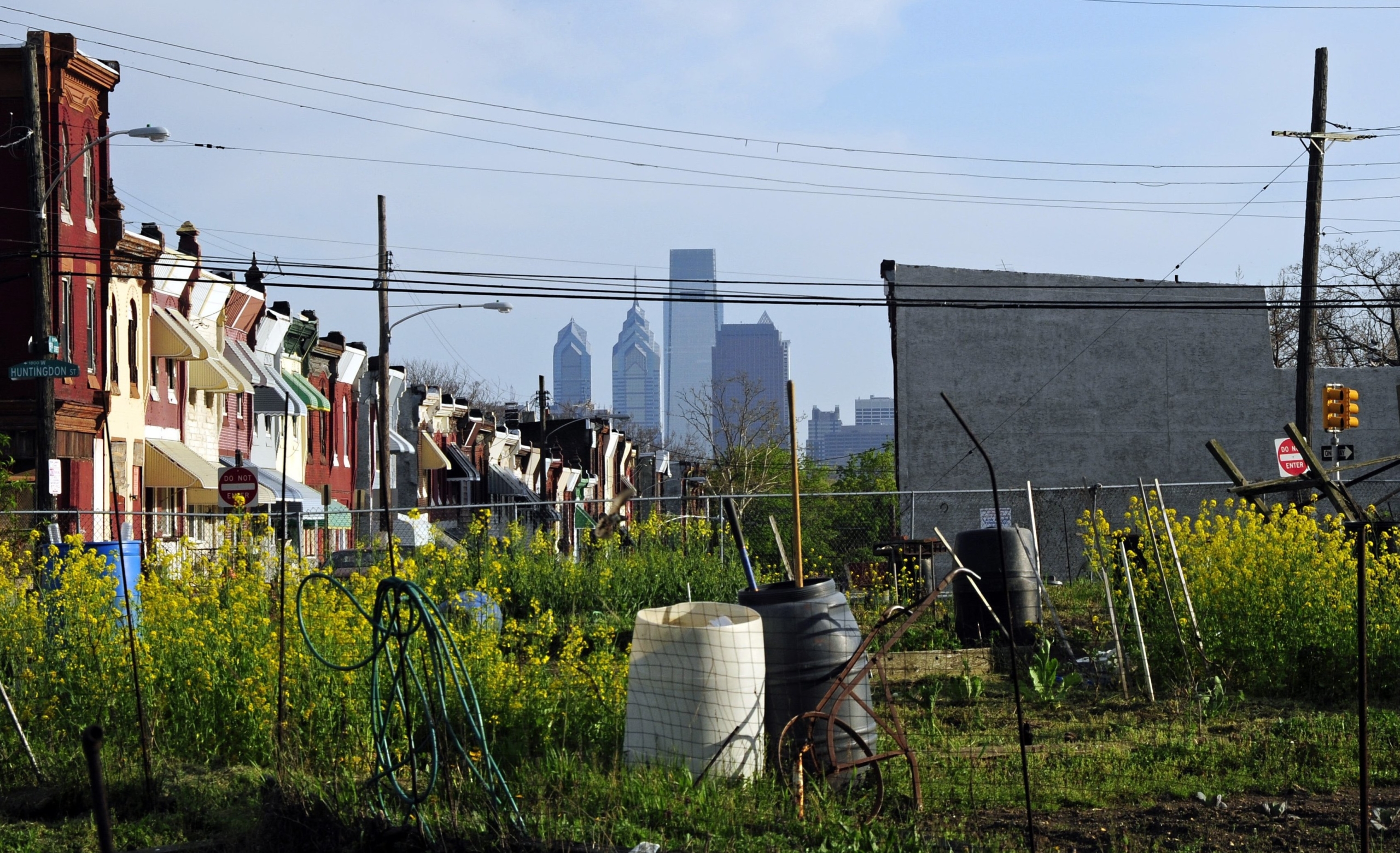FOR PHILADELPHIA NEWS CONSUMERS, WHYY’s story about 8-year-old Dakota Johnson is likely a refreshing one. After Dakota and her father survived an apartment fire five months ago, her mother, who like her father works in mental health, found her a new free therapy program for childhood trauma—the only of its kind in a district with some of the highest poverty rates in the city. According to the story, Dakota has found some relief there, and over the next two years, so will 120 other children. It’s a positive, evidence-based resource for a neighborhood in which residents commonly experience trauma.
In a city where more than 25 percent of citizens live below the poverty line, and nearly half cannot provide basic subsistence for their families, news stories about poverty can feel anesthetizing. But a local, collaborative reporting initiative—the one through which Dakota’s story was published—is working to reframe despairing poverty narratives by digging deep into its complex causes and highlighting solutions that have the potential to make a difference.
On April 19, the Resolve Philadelphia solutions journalism collaborative launched Broke in Philly, a yearlong project through which 19 outlets are pursuing in-depth reporting on issues related to poverty and the city’s push for economic justice. In the dozen-or-so stories Broke has published since its launch, its media partners have made strides in avoiding stereotypes and stigmatizing language. The group has also made community engagement central to the project’s development, event planning, and reporting process.
ICYMI: The Triibe roams a Chicago overlooked by legacy media
For Resolve, this model of collaborative, community-engaged journalism is nothing new. The collective evolved from the Reentry Project, led by The Solutions Journalism Network, which from late 2016 to March 2018 published and broadcast more than 200 stories on the challenges of and solutions to prisoner reentry in Philadelphia. The Reentry Project also collaborated with community members to host an event called The Reentry Blueprint: Stories and Solutions from the Formerly Incarcerated.
“I think the way we tried to approach the topic, both through our reporting and then through the events we did, really did shift people’s conception of the role media can play in their world, and the reentry space and society at large,” says Resolve’s executive director, Jean Friedman-Rudovsky. “People were excited about the solutions approach and liked seeing more forward-thinking, positive reporting, particularly on an issue where you so often hear about the negative side.”
As citizens, we tend to look at these problems, and believe because we’re exposed only to negative reporting that this is the way it has to be—that poverty is, in fact, unavoidable.
Most of Broke’s media partners, such as the Philadelphia Media Network, WHYY, PhillyCAM, and WURD, came directly from the Reentry Project. But following the Reentry Project’s success, Resolve picked up a few more, such as City and State PA, The Philadelphia Tribune, and Philatinos Radio. As Resolve expanded, they decided that instead of choosing a topic amongst themselves, they would ask the public what they should cover next. They received more than 400 responses. The suggestions—submitted through an online survey, an SMS text line, notecards, and focus groups—ranged from education reform, to litter, to corruption in city government.
When Resolve met to discuss which topic they should report on, it was unsurprising that the city’s most pervasive issue repeatedly rose to the top of the conversation.
“The issues of poverty really are embedded in every area of coverage we do—education inequity, healthcare, affordable housing, transportation, local government, and politics,” says Sandra Clark, WHYY’s vice president for news and civic dialogue. “Poverty is not detached from any of these issues.”
To prepare for Broke, Friedman-Rudovsky gave herself a crash course on poverty and connected with organizations, experts, and people with lived experience so they could together shape the mission and path of the project. Community experts warned her that focusing just on poverty would risk communicating to the public that poverty is siloed—like an “an accident of society,” as she put it—and that individuals who experience it may be disconnected and responsible for that experience.
To combat that narrative, Resolve provided all involved news outlets with a 29-page reporter’s guide, which outlines framing and language recommendations, and gives reporters background information, statistics, and a primer on federal, state, and local economic policy. For example, it reminds reporters that poverty “is a state, not a trait.” Journalists are recommended to use phrases like “people experiencing poverty,” as opposed to “the poor,” “economically disadvantaged,” or “needy.” (A language guide is available on the Broke in Philly website.)
While the project launched just last month, national news organizations are starting to take notice of its efforts. Friedman-Rudovsky recently received a note from a copy editor at a large national outlet who said she shared the reporter’s guide with her entire copy desk.
According to Keith Hammonds, the president of the Solutions Journalism Network, beyond Broke’s language, its solutions approach challenges notions about the perceived hopelessness of poverty—something the news media too often communicates to the public.
“As citizens, we tend to look at these problems, and believe because we’re exposed only to negative reporting that this is the way it has to be—that poverty is, in fact, unavoidable,” says Hammonds. “Solutions journalism tells me about efforts to address poverty in my community, and I start to think, ‘Oh, there are people in Philadelphia doing stuff that seems to be working. Therefore, it’s actually not unavoidable.”
Hammond adds, “We do, in fact, have agency, both as individuals and as a community, in taking on challenges that otherwise seem wildly out of reach.”
Jillian Bauer-Reese is an assistant professor of journalism in the Klein College of Media and Communication at Temple University, where she teaches a course called Solutions Journalism: Covering Addiction. She is also a person in long-term recovery. You can contact her at jbr@temple.edu or on Twitter @thesmallpicture.

